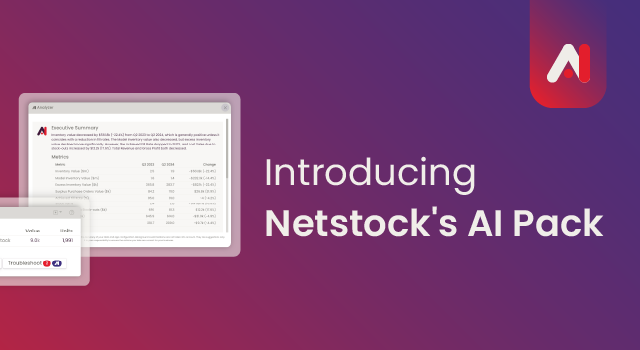When it comes to disruptions in the supply chain, we may not be in control of external factors such as political, environmental, or, as we have recently seen, pandemics.
However, we are in control over what happens inside our operations. If every business owner ensured that the right systems, processes, and procedures were in place, this would dramatically mitigate the fallout from any external force that threatens the supply chain. A recent article titled All clouds have a silver lining suggests that now is the perfect time to re-assess your systems and solutions.
That aside, with all the fatigue on COVID19 related news, we decided to explore other supply chain disruptions that companies have faced and look at how, by aligning processes, strategies, and technologies with your customers and suppliers, you can prevent a lot of what has happened to other organizations from happening to yours. In this article, we look at a case in 2018 that caused a big issue for KFC in the United Kingdom and Ireland.
In a bid to make their supply chain more cost-effective, KFC decided to switch 3PL providers from Bidvest to DHL. Instead of this being a cost-cutting exercise, it became a very costly decision not only in terms of money but also reputational damage for both parties. It all began on the 14th Feb 2018 when trucks arrived at the DHL warehouse in Rugby UK. According to a BBC report, truck drivers were left waiting for hours due to problems getting into the warehouse. The depot had been used to store chickens before the correct permits were obtained.
Additionally, there were staffing issues, and lorry loads of chicken were left to go off because there were not enough people to offload. One driver reported that his delivery had to be scrapped as his truck’s temperature was set incorrectly at the Rugby depot. Three traffic junctions that were in the vicinity of Rugby where DHL’s warehouse is located were closed off due to 2 different traffic incidents. DHL trucks getting stuck in traffic jams exacerbated the situation, and so the chicken shortage began. The result, only 266 of 870 KFC outlets were left open, and the open outlets were left serving from a limited menu. The hatching and grow out time of chickens isn’t something that can be rushed. It was unlikely that the additional supply needed to rectify the spoiled stock shortage would have been quick to rectify, resulting in a few months before all stores were re-opened and able to supply the choice of the full menu.
Let’s take a look at a few lessons that can be learned from this story and some factors to consider if you are looking at switching providers:
The food industry differs when it comes to their supply chain than nonperishable goods companies. Having one warehouse to deliver from can work, but when the product is perishable, it makes more sense to ship from numerous locations to ensure not only on-time delivery but also that fresh and undamaged products reach their destination.
When changing providers, especially in such a considerable distribution run, you should have a contingency plan. Think of what can go wrong and have a plan in place to manage that.
When switching 3PL’s on a large contract, rather use a phased approach with your new provider. Allow them to manage a portion of the contract and see how that goes first. This way, you are spreading your risk, and if the new provider has any problems, the impact won’t be as catastrophic.
Conduct proper due diligence when looking at new providers. Check out their financial standing and see what other contracts they have, especially ones within the same market segment. Some 3PL’s are not as geared for the distribution of perishable goods as others are. Look at their infrastructure, how many warehouses do they have? How much of their operations are outsourced? Do they have the right transport equipment such as cold storage in their fleets? If the 3PL is utilizing subcontractors, make sure that you check them out as well.
Ensure that the new 3PL truly understands your business and that you define the key metrics upfront.
In some cases, it may be better if you have a broad distribution to allocate specific routes to different providers that are prevalent in these regions. This way, you aren’t dealing with subcontractors but with the companies directly, which will give you more visibility of your shipments on those routes. This will raise the costs of your logistics, but in some cases, it may be well worth it as you are assured of business continuity by having multiple providers. You can gauge their service levels and possibly narrow down your list by giving the top performers more of the contract.
In the situation where your customers are not only the end client but the franchise owners as well, treat logistics as a service function and not as a cost center.
Mistakes happen. How these mistakes are handled and fixed is what matters. A strong positive in the KFC story was the way their marketing managed the crisis. They were quick to inform the public and kept the public informed as and when they got updated information. Adding a slice of humor to their adverts held them in good stead and softened the blow to some extent. Their advert showed an empty bargain bucket with the company’s logo re-arranged to read as “FCK,” and the caption read “Huge apologies to our customers, especially those who traveled out of their way to find we were closed. “And endless thanks to our KFC team members and our franchise partners for working tirelessly to improve the situation.
In summary, if you are looking to make a change, no matter how big or small, remember that communication across the business is vital. If you have never embarked on a change like this, do some research and find someone that has. Learn from their experiences, or you may end up making bad decisions. With the correct process and procedures in place, the change should run smoothly.
Content published on Craig De Kock – LinkedIn





